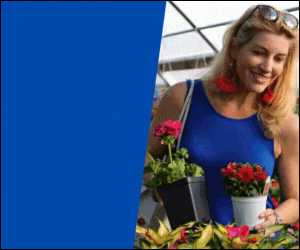Plant Select® is the country’s leading source of plants designed to thrive in the high plains and intermountain region. It is a nonprofit collaboration of Colorado State University, Denver Botanic Gardens and horticulturists around the world. During 2020, our 23rd anniversary, we are excited to recommend seven new plants.

Artemisia abrotanum ‘Leprechaun’ – Leprechaun Southernwood
This compact selection of the ancient garden herb forms a dense, symmetrical mound of whorled silver-green foliage that suggests a heat-loving boxwood from a distance. Plant in mass to create a low garden hedge. It grows to about 2 feet high and 1 to 2 feet wide. It prefers sun to partial sun. Its water needs are moderate to xeric. It grows best in loam to sandy soils, and is cold hardy to zones 4 to 8.
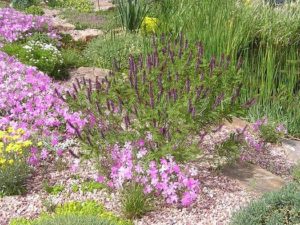 Amorpha nana – Dwarf Lead Plant
Amorpha nana – Dwarf Lead Plant
This small, native woody plant will enjoy the hottest and driest spots in the garden. Dense 1- to 3-inch flower spikes, ranging from deep purple to blue-violet, will bloom in June to July. It grows to about 1 to 2 feet in height and width. Its water needs are dry to xeric. It grows best in clay, loam or sandy soils, and is cold hardy to zones 3 to 8.
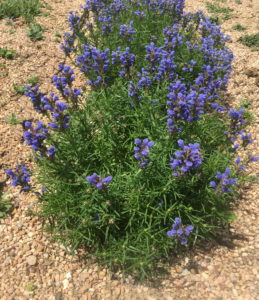 Dracocephalum ruyschiana – Indigo Blue Dragonhead
Dracocephalum ruyschiana – Indigo Blue Dragonhead
Clusters of violet-blue rounded “dragon head” flowers bloom for weeks in early summer. The lush mound of narrow leaves is attractive when the plant is not in bloom. It is easily grown in borders or xeriscape gardens, and grows to about 16 inches in height and 12 inches in width. It prefers sun to partial sun. Its water needs are moderate to dry. It grows best in clay, loam or sandy soil, and is cold hardy to zones 3 to 8.
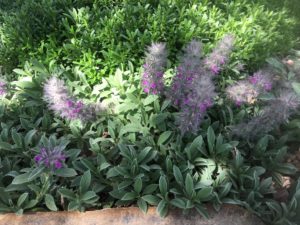 Stachys lavandulifolius – ‘Summer Frost Lambs’ Ear
Stachys lavandulifolius – ‘Summer Frost Lambs’ Ear
A robust, silver sport of cotton candy, the bright, silver-haired leaves of Lamb’s Ear are distinctly different from the Pink Cotton Candy parent. The pink flowers bloom from late spring to early summer. It grows to about 12 to 18 inches in height and 18 to 24 inches in width. It prefers sun to partial sun. Its water needs are moderate to dry. It grows best in loam or sandy soil, and is cold hardy to zones 5 to 9.
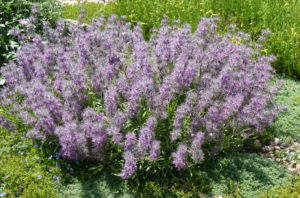 Stachys lavandulifolius (Green Form) – Pink Cotton Lamb’s Ear
Stachys lavandulifolius (Green Form) – Pink Cotton Lamb’s Ear
This cousin to Lamb’s Ear makes low mats of soft, attractive foliage with incredibly flossy clusters of pink trumpets that really do suggest cotton candy. It is a vigorous, superior selection of a Turkish wildflower for the front of garden borders or in a xeriscape garden. It grows to about 12 to 18 inches in height and 18 to 24 inches in width. It prefers sun to partial sun. Its water needs are moderate to dry. It grows best in loam or sandy soils, and is cold hardy to zones 5 to 9. Both forms are determined to become classic additions to American gardens.
 Thermopsis lupinoides – Golden Candles
Thermopsis lupinoides – Golden Candles
Thick clusters of bright yellow buds emerge at the ground level in April, tapering into elegant yellow spires of showy bloom well into June. Attractive seed pods crown the trim mounds of lupine-like foliage the rest of summer. It is a tough, adaptable perennial for borders or xeriscape that grows to about 24 to 36 inches in height and 20 to 30 inches in width. Its water needs are moderate to dry. It grows best in clay, loam or sandy soils, and is cold hardy to zones 3 to 8.
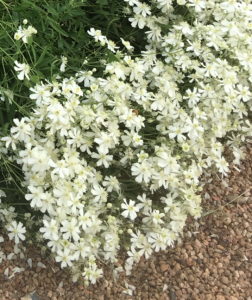 Clematis hexopetala ‘Mongolian Snowflakes’ – Mongolian Snowflakes Clematis
Clematis hexopetala ‘Mongolian Snowflakes’ – Mongolian Snowflakes Clematis
Mongolian snowflakes is a striking herbaceous clematis forming a mounded snowstorm of 2-inch, six-petaled, ivory-colored flowers. Spent flowers give way to shiny, feathery seed puffs that are showy in their own right, with continuous flowers starting in May through summer. It grows to about 2 to 3 feet in height and width. It prefers sun to partial sun. Its water needs are more moderate to dry. It grows best in clay, loam or sandy soil, and is cold hardy to zones 5 to 9.





